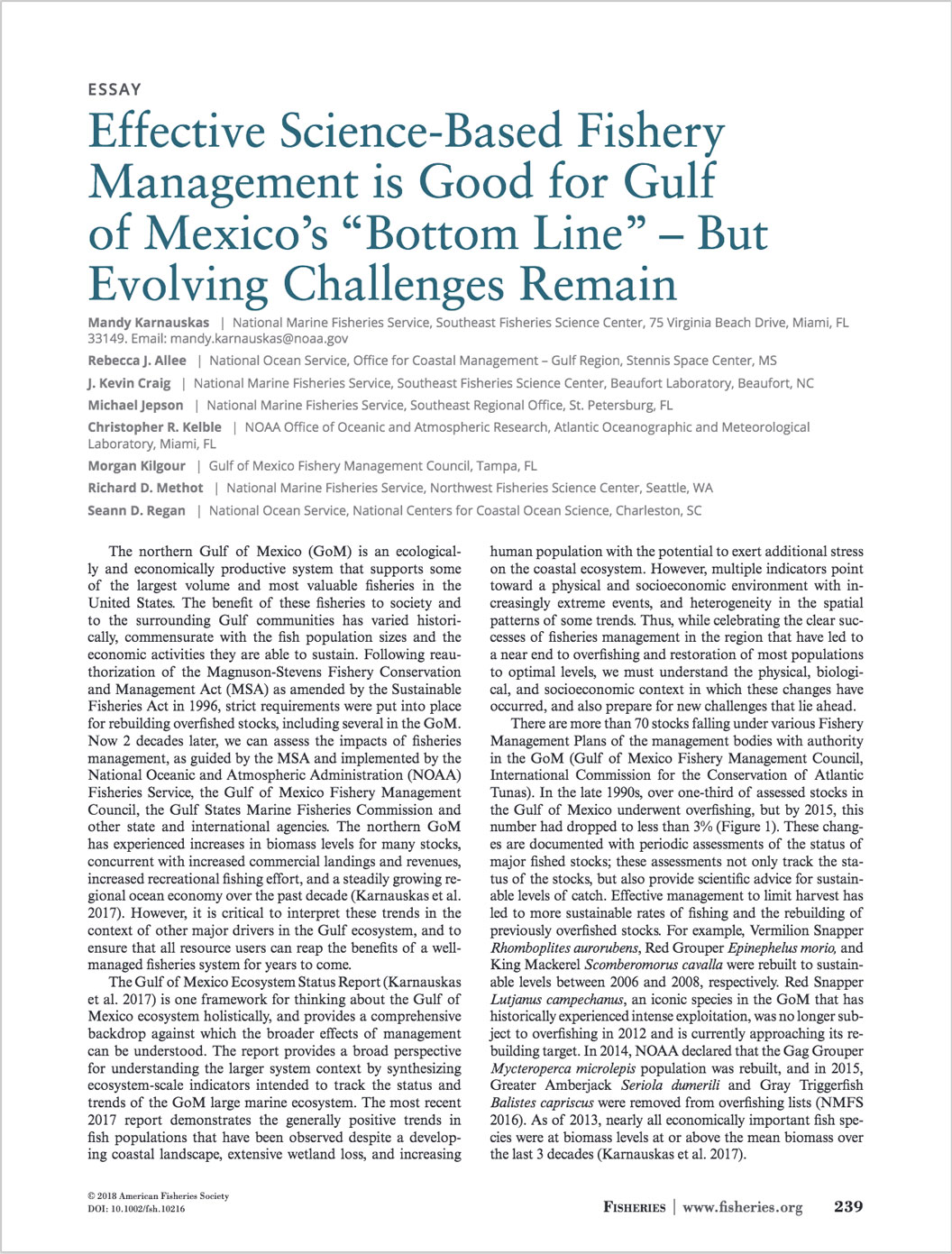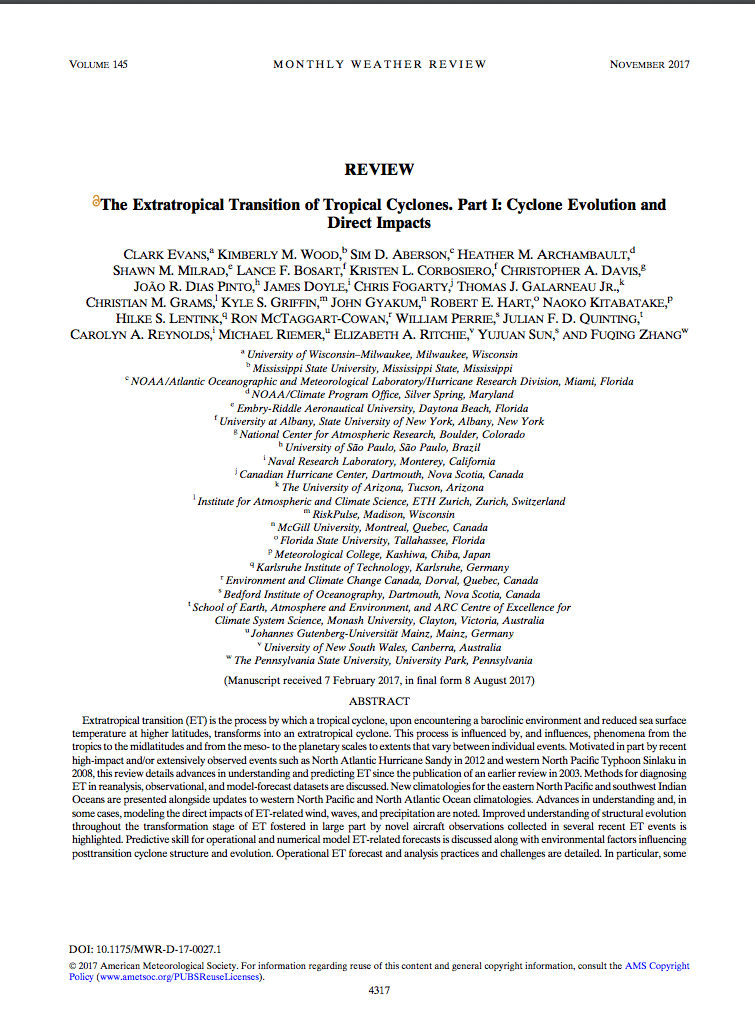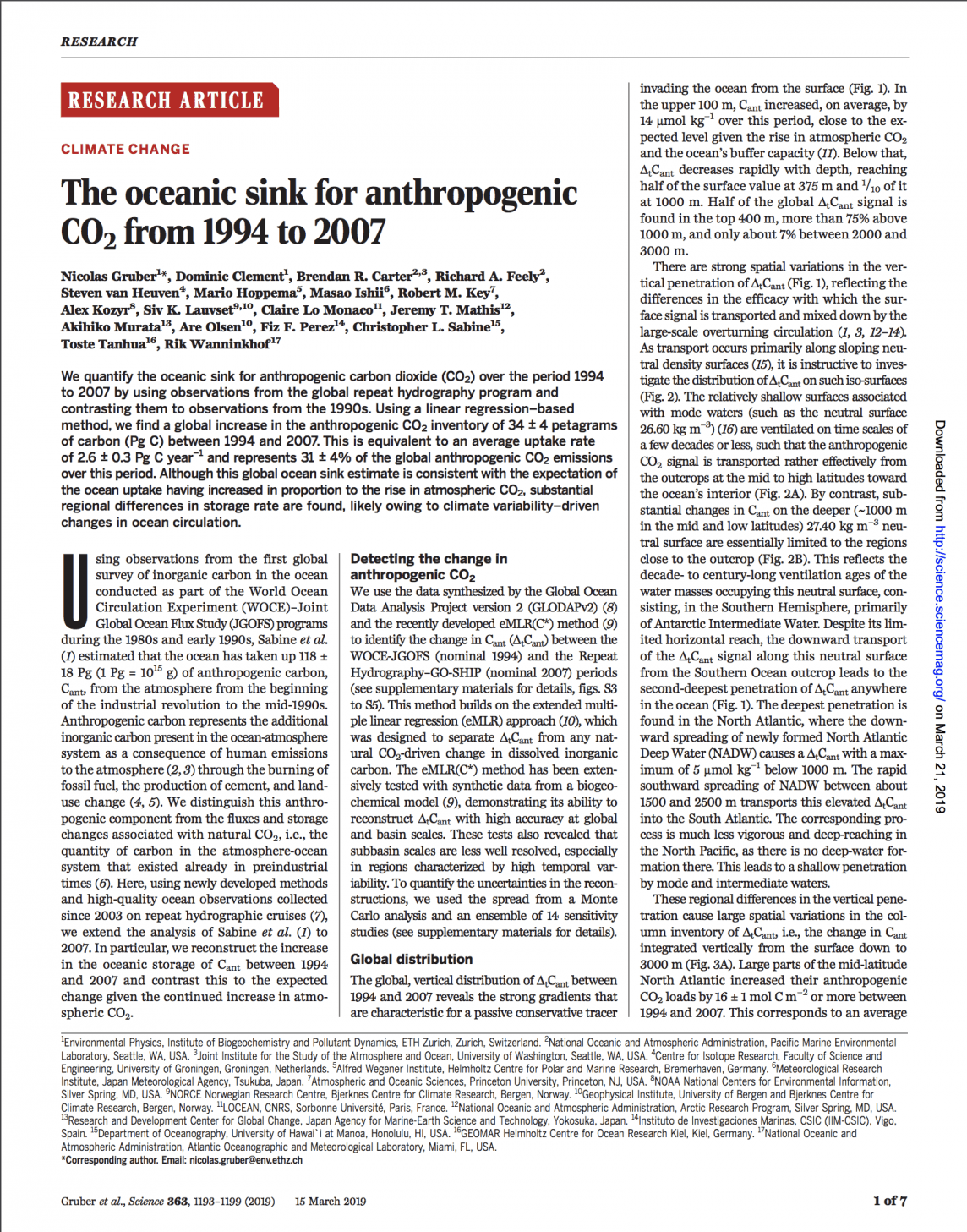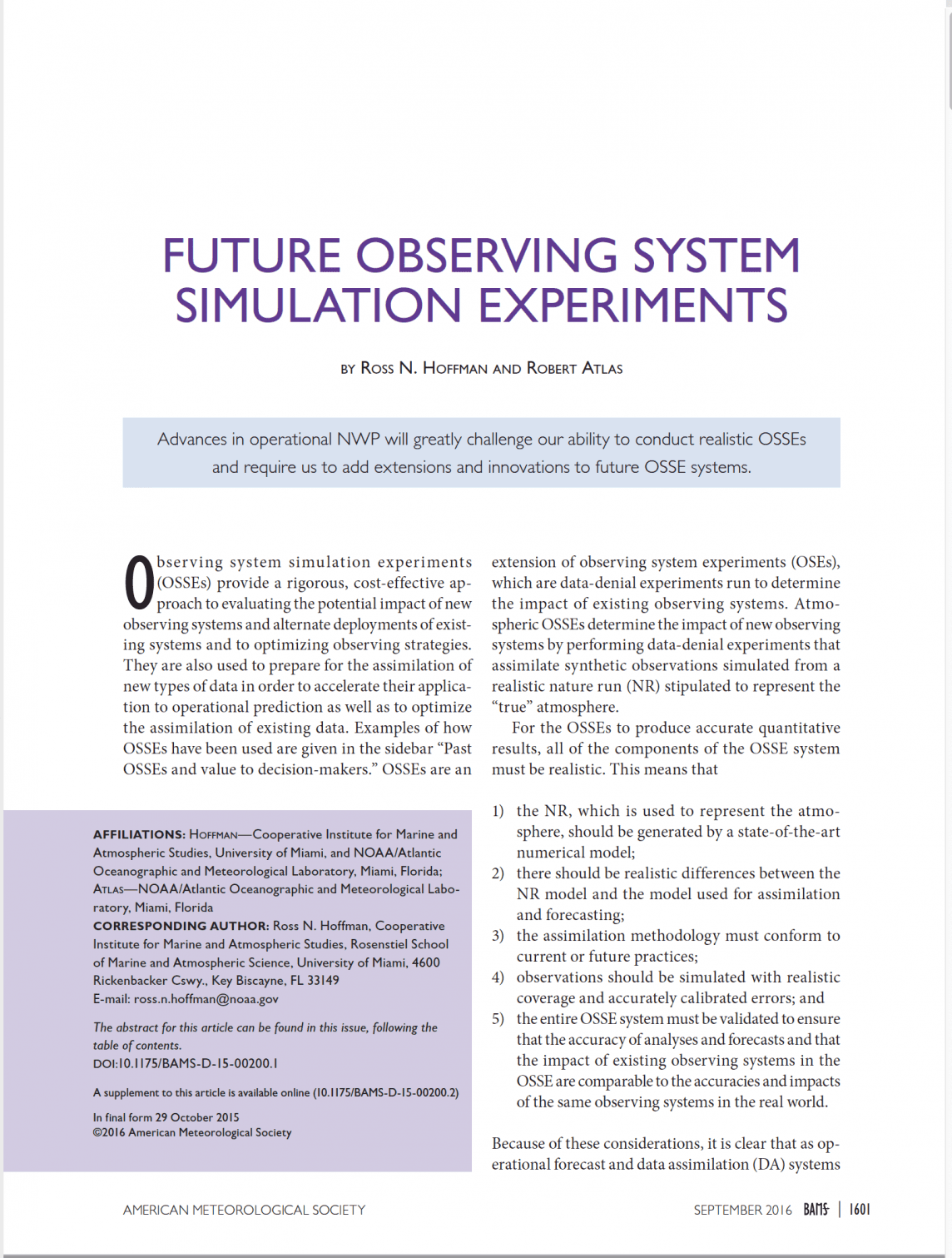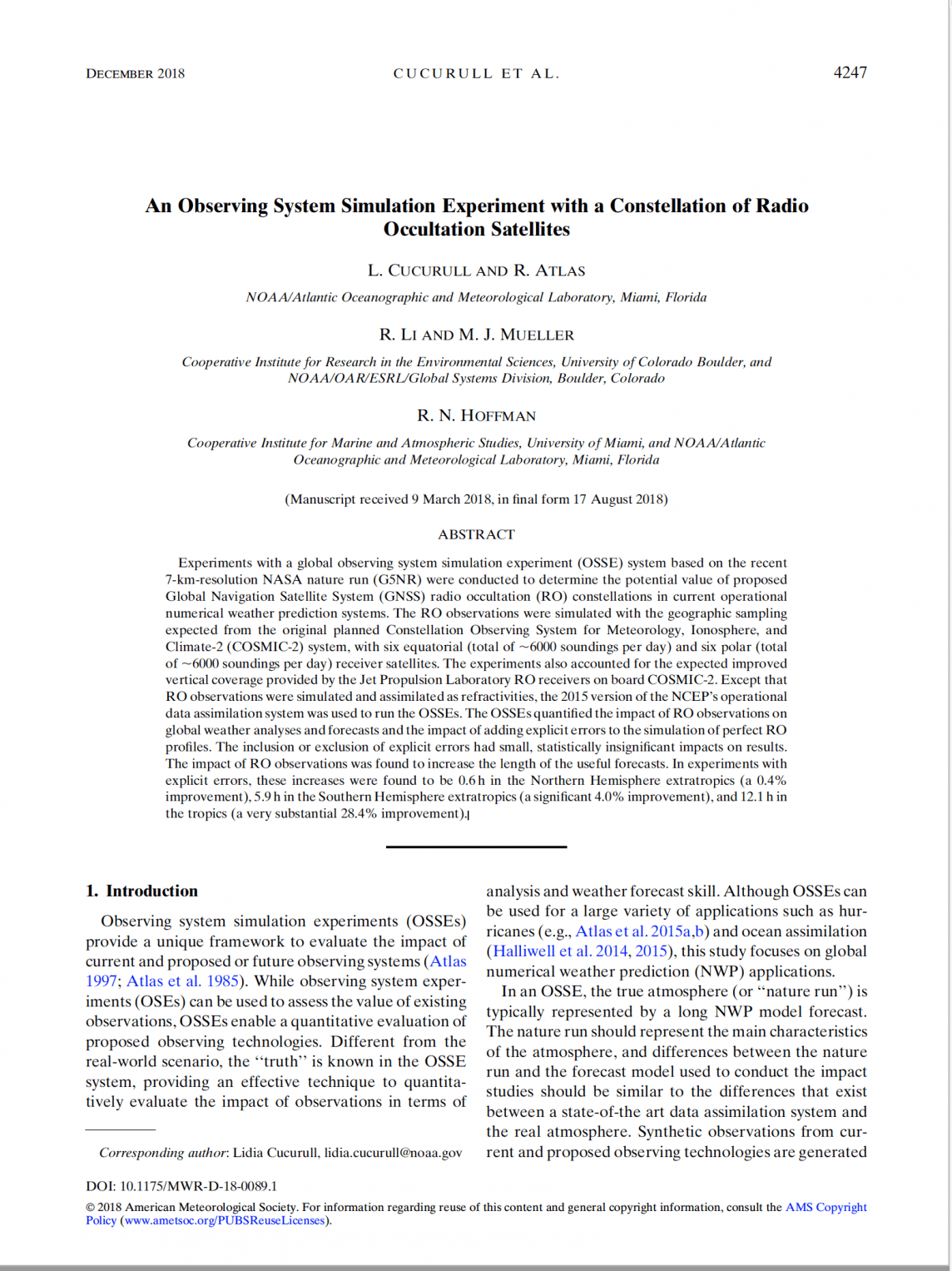Introduction: The northern Gulf of Mexico (GoM) is an ecologically and economically productive system that supports some of the largest volume and most valuable fisheries in the United States. The benefit of these fisheries to society and to the surrounding Gulf communities has varied historically, commensurate with the fish population sizes and the economic activities they are able to sustain. Following reauthorization of the Magnuson‐Stevens Fishery Conservation and Management Act (MSA) as amended by the Sustainable Fisheries Act in 1996, strict requirements were put into place for rebuilding overfished stocks, including several in the GoM. Now 2 decades later, we can assess the impacts of fisheries management, as guided by the MSA and implemented by the National Oceanic and Atmospheric Administration (NOAA) Fisheries Service, the Gulf of Mexico Fishery Management Council, the Gulf States Marine Fisheries Commission and other state and international agencies. The northern GoM has experienced increases in biomass levels for many stocks, concurrent with increased commercial landings and revenues, increased recreational fishing effort, and a steadily growing regional ocean economy over the past decade (Karnauskas et al. 2017). However, it is critical to interpret these trends in the context of other major drivers in the Gulf ecosystem, and to ensure that all resource users can reap the benefits of a well‐managed fisheries system for years to come.
The Extratropical Transition of Tropical Cyclones. Part I: Cyclone Evolution and Direct Impacts
Extratropical transition (ET) is the process by which a tropical cyclone, upon encountering a baroclinic environment and reduced sea surface temperature at higher latitudes, transforms into an extratropical cyclone. This process is influenced by, and influences, phenomena from the tropics to the midlatitudes and from the meso- to the planetary scales to extents that vary between individual events. Motivated in part by recent high-impact and/or extensively observed events such as North Atlantic Hurricane Sandy in 2012 and western North Pacific Typhoon Sinlaku in 2008, this review details advances in understanding and predicting ET since the publication of an earlier review in 2003. Methods for diagnosing ET in reanalysis, observational, and model-forecast datasets are discussed. New climatologies for the eastern North Pacific and southwest Indian Oceans are presented alongside updates to western North Pacific and North Atlantic Ocean climatologies. Advances in understanding and, in some cases, modeling the direct impacts of ET-related wind, waves, and precipitation are noted. Improved understanding of structural evolution throughout the transformation stage of ET fostered in large part by novel aircraft observations collected in several recent ET events is highlighted. Predictive skill for operational and numerical model ET-related forecasts is discussed along with environmental factors influencing posttransition cyclone structure and evolution. Operational ET forecast and analysis practices and challenges are detailed. In particular, some challenges of effective hazard communication for the evolving threats posed by a tropical cyclone during and after transition are introduced. This review concludes with recommendations for future work to further improve understanding, forecasts, and hazard communication.
The Oceanic Sink for Anthropogenic CO2 from 1994 to 2007
We quantify the oceanic sink for anthropogenic carbon dioxide (CO2) over the period 1994 to 2007 by using observations from the global repeat hydrography program and contrasting them to observations from the 1990s. Using a linear regression–based method, we find a global increase in the anthropogenic CO2 inventory of 34 ± 4 petagrams of carbon (Pg C) between 1994 and 2007. This is equivalent to an average uptake rate of 2.6 ± 0.3 Pg C year−1 and represents 31 ± 4% of the global anthropogenic CO2 emissions over this period. Although this global ocean sink estimate is consistent with the expectation of the ocean uptake having increased in proportion to the rise in atmospheric CO2, substantial regional differences in storage rate are found, likely owing to climate variability–driven changes in ocean circulation.
Future Observing System Simulation Experiments
Abstract: An additional set of challenges will arise when future DA systems strongly couple the different Earth system components. As operational forecast and data assimilation (DA) systems evolve, observing system simulation experiment (OSSE) systems must evolve in parallel. Expected development of operational systems—especially the use of data that are currently not used or are just beginning to be used, such as all-sky and surface-affected microwave radiances—will greatly challenge our ability to construct realistic OSSE systems.In response, future OSSE systems will require coupled models to simulate nature and coupled observation simulators. The requirements for future evolving OSSE systems and potential solutions to satisfy these requirements are discussed. It is anticipated that in the future the OSSE technique will be applied to diverse and coupled domains with the use of increasingly advanced and sophisticated simulations of nature and observations.
An Observing System Simulation Experiment with a Constellation of Radio Occultation Satellites
Experiments with a global observing system simulation experiment (OSSE) system based on the recent 7-km-resolution NASA nature run (G5NR) were conducted to determine the potential value of proposed Global Navigation Satellite System (GNSS) radio occultation (RO) constellations in current operational numerical weather prediction systems. The RO observations were simulated with the geographic sampling expected from the original planned Constellation Observing System for Meteorology, Ionosphere, and Climate-2 (COSMIC-2) system, with six equatorial (total of ;6000 soundings per day) and six polar (total of 6000 soundings per day) receiver satellites. The experiments also accounted for the expected improved vertical coverage provided by the Jet Propulsion Laboratory RO receivers on board COSMIC-2. Except that RO observations were simulated and assimilated as refractivities, the 2015 version of the NCEP’s operational data assimilation system was used to run the OSSEs. The OSSEs quantified the impact of RO observations on global weather analyses and forecasts and the impact of adding explicit errors to the simulation of perfectRO profiles. The inclusion or exclusion of explicit errors had small, statistically insignificant impacts on results. The impact of RO observations was found to increase the length of the useful forecasts. In experiments with explicit errors, these increases were found to be 0.6 h in the Northern Hemisphere extratropics (a 0.4%improvement), 5.9 h in the Southern Hemisphere extratropics (a significant 4.0% improvement), and 12.1 h in the tropics (a very substantial 28.4% improvement).
